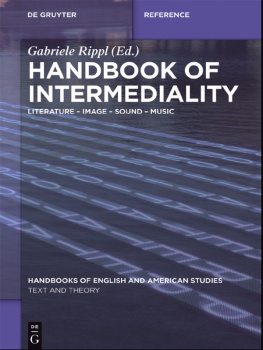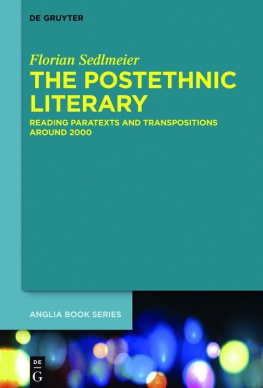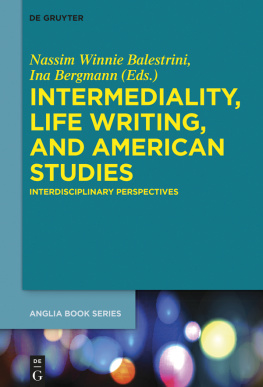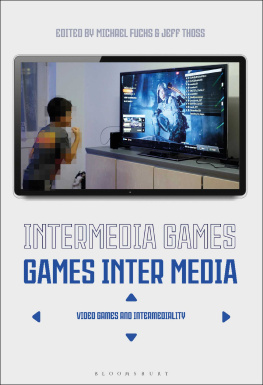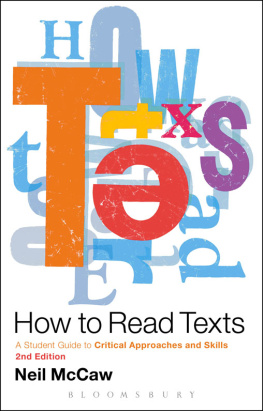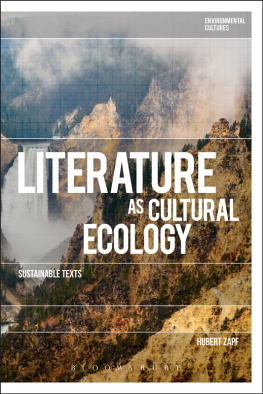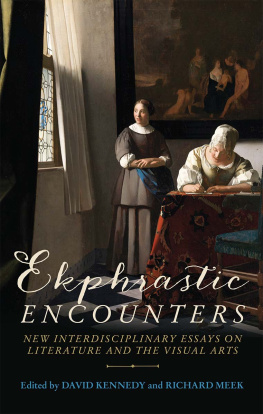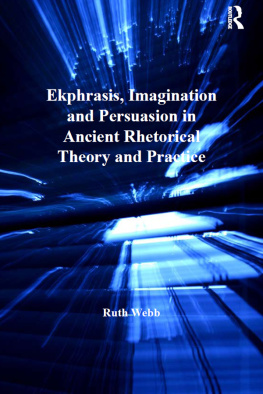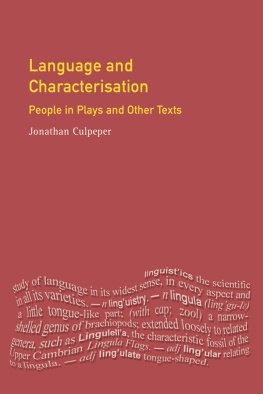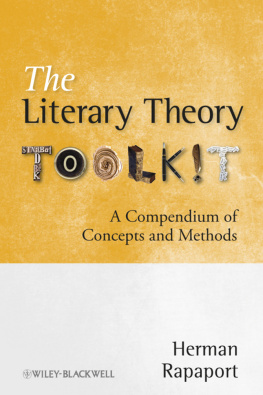- Literature
and Photography
Handbook of Intermediality
Handbooks of
English and American Studies
____
Edited by
Martin Middeke, Gabriele Rippl, Hubert Zapf
Advisory Board
Derek Attridge, Elisabeth Bronfen, Ursula K. Heise, Verena Lobsien, Laura Marcus, J. Hillis Miller, Martin Puchner
Volume 1

ISBN 978-3-11-030836-5
e-ISBN (PDF) 978-3-11-031107-5
e-ISBN (EPUB) 978-3-11-039378-1
Library of Congress Cataloging-in-Publication Data
A CIP catalog record for this book has been applied for at the Library of Congress.
Bibliographic information published by the Deutsche Nationalbibliothek
The Deutsche Nationalbibliothek lists this publication in
the Deutsche Nationalbibliografie; detailed bibliographic data are available
in the Internet at dnb.dnb.de .
2015 Walter de Gruyter GmbH, Berlin/Boston
Satz: fidus Publikations-Service GmbH, Nrdlingen
www.degruyter.com
Editors Preface
This De Gruyter handbook series has been designed to offer students and researchers a compact means of orientation in their study of Anglophone literary texts. Each volume involving a particular historical or theoretical focus introduces readers to current concepts and methodologies, as well as academic debates by combining theory with text analysis and contextual anchoring. It is this bridging between abstract survey and concrete analysis which is the central aim and defining feature of this series, bringing together general literary history and concrete interpretation, theory and text. At a time when students of English and American literary studies have to deal with an overwhelming amount of highly specialized research literature, as well as cope with the demands of the new BA and MA programs, such a handbook series is indispensable. Nevertheless, this series is not exclusively targeted to the needs of BA and MA students, but also caters to the requirements of scholars who wish to keep up with the current state of various fields within their discipline.
Individual volumes in the De Gruyter Handbook series will typically provide:
knowledge of relevant literary periods, genres, and historical developments;
knowledge of representative authors and works of those periods;
knowledge of cultural and historical contexts;
knowledge about the adaptation of literary texts through other media;
knowledge of relevant literary and cultural theories;
examples of how historical and theoretical information weaves fruitfully into interpretations of literary texts.
Internationally renowned colleagues have agreed to collaborate on this series and take on the editorship of individual volumes. Thanks to the expertise of the volume editors responsible for the concept and structure of their volumes, as well as for the selection of suitable authors, HEAS not only summarizes the current state of knowledge in the field of Anglophone literary and cultural studies, but also offers new insights and recent research results on the most current topics, thus launching new academic debates.
We would like to thank all colleagues collaborating in this project as well as Dr. Ulrike Krauss at De Gruyter without whose unflagging support this series would not have taken off.
The first volumes include:
Gabriele Rippl (ed.): Handbook of Intermediality
Hubert Zapf (ed.): Handbook of Ecocritiscm and Cultural Ecology
Julia Straub (ed.): Handbook of Transatlantic North American Studies
Ralf Haekel (ed): Handbook of British Romanticism
Martin Middeke and Monika Pietrzak-Franger (eds.): Handbook of the English Novel, 18301900
Christoph Reinfandt (ed.): Handbook of the English Novel, 19002015
Timo Mller (ed.): Handbook of the American Novel, 19002015
Martin Middeke
Gabriele Rippl
Hubert Zapf
May 2015
Contents
Literature
and Photography
Gabriele Rippl
0 Introduction
1 Why Intermediality?
This Handbook of Intermediality introduces the vast field of intermediality research which has been ever-expanding since the 1980s. Paying tribute to the fact that media do not exist disconnected from each other, the handbook aims at familiarizing its readers with the diverse affirmative as well as critical approaches to theoretical concepts such as intermediality, multi- and plurimediality, intermedial reference, transmediality, intermedial methodology and related concepts such as visual culture, literary visuality, the musicalization of fiction and poetry, literary acoustics, remediation, adaptation, and multimodality etc. Generally speaking, the term intermediality refers to the relationships between media and is hence used to describe a huge range of cultural phenomena which involve more than one medium. One of the reasons why it is impossible to develop one definition of intermediality is that it has become a central theoretical concept in many disciplines such as literary, cultural and theater studies as well as art history, musicology, philosophy, sociology, film, media and comics studies and these disciplines all deal with different intermedial constellations which ask for specific approaches and definitions.
The popularity and increasing importance of intermediality studies and other related fields can be attributed to the fact that in our digital age many works of art, cultural artifacts, literary texts and other cultural configurations either combine and juxtapose different media, genres and styles or refer to other media in a plethora of ways. The focal nodes of this handbook are intermedial relationships and networks between Anglo-American as well as Anglophone postcolonial literary texts and other media. Intermedial literary texts transgress their own medial boundary writing in many creative ways by including pictures and illustrations or by referring to absent (static and moving, analog and digital) pictures, by imitating filmic modes or by mimicking musical structures and themes. In the face of the sheer number of Anglophone literary texts which participate in intermedial interfaces a few recent examples are Charles Simics Dime-Store Alchemy (1992), David Dabydeens Turner (1994), Salman Rushdies The Moors Last Sigh (1995), John Updikes Seek My Face (2002) or Siri Hustvedts What I Loved (2003) literary scholars today have come to accept that media and art forms cannot be analyzed in isolation and instead have to be discussed against the backdrop of their medial networks, what Bernd Herzogenrath calls their arch-intermediality (2012, 4). Literatures role and function must hence be appraised in a cultural field characterized not only by the competition and collaboration of different media, but also by medial interfaces. Our digital age also has an impact on how we think of literature today: The term has undergone a considerable change in meaning and has come to include not only relatively stable literary texts which exist in oral or printed form, but also hypertextually encoded fictions such as Michael Joyces Afternoon: A Story (1990), Stuart Moulthrops Victory Garden (1991), Simon Biggss The Great Wall of China (1996) and Caitlin Fishers hypermedia novella These Waves of Girls (2001), all of which exist only in an electronic medial form. Hyperfictions interactive and multimedial form reminds us that any concept of a purely verbal art does not work and invites us to investigate intermedial configurations.
Next page
